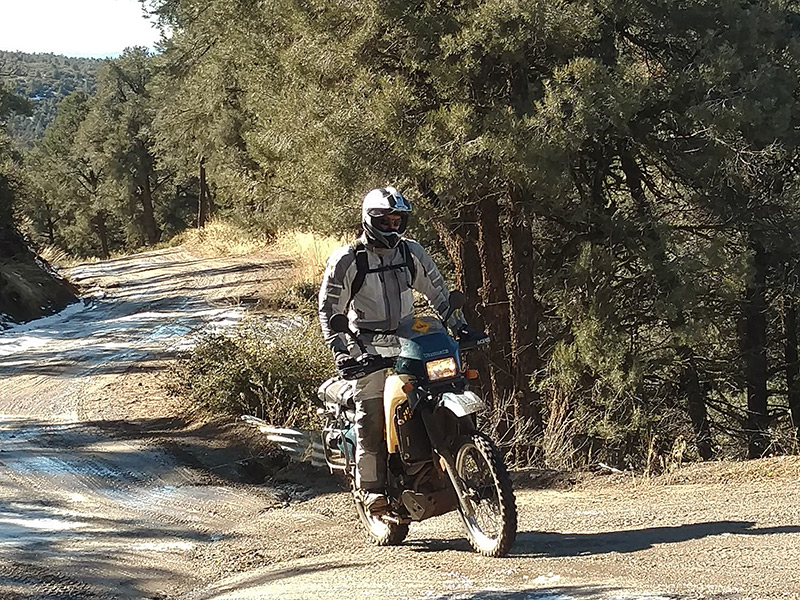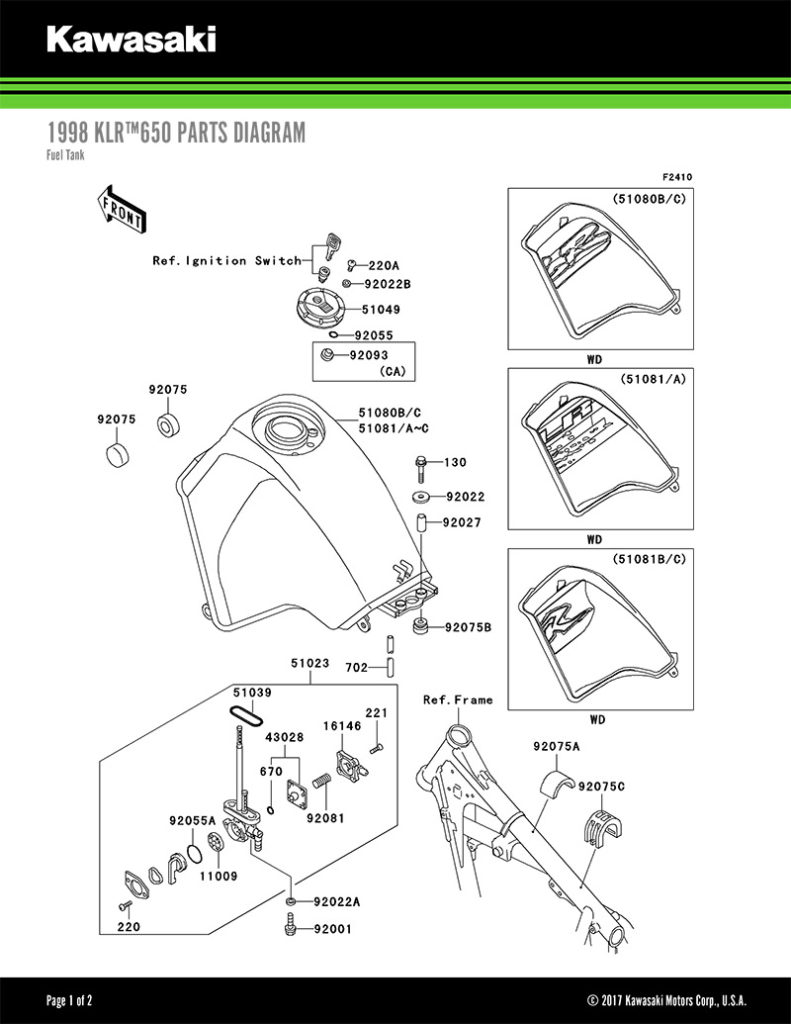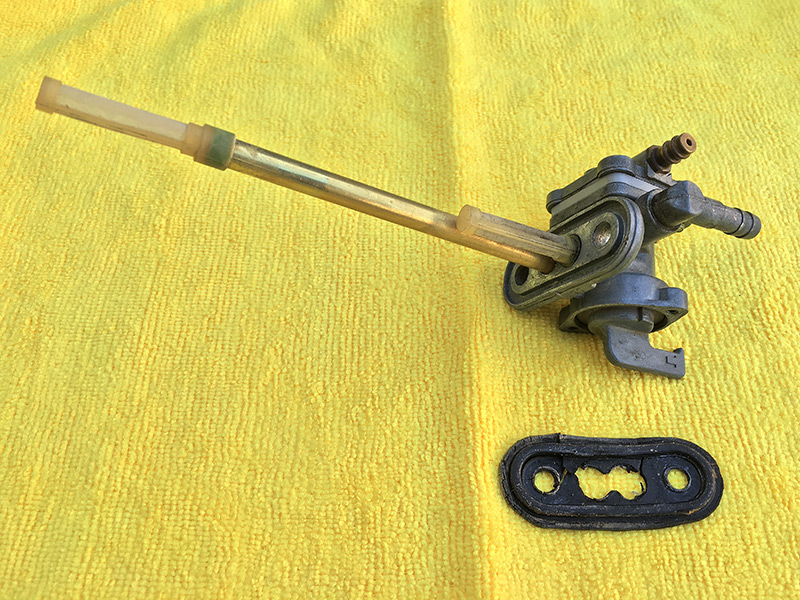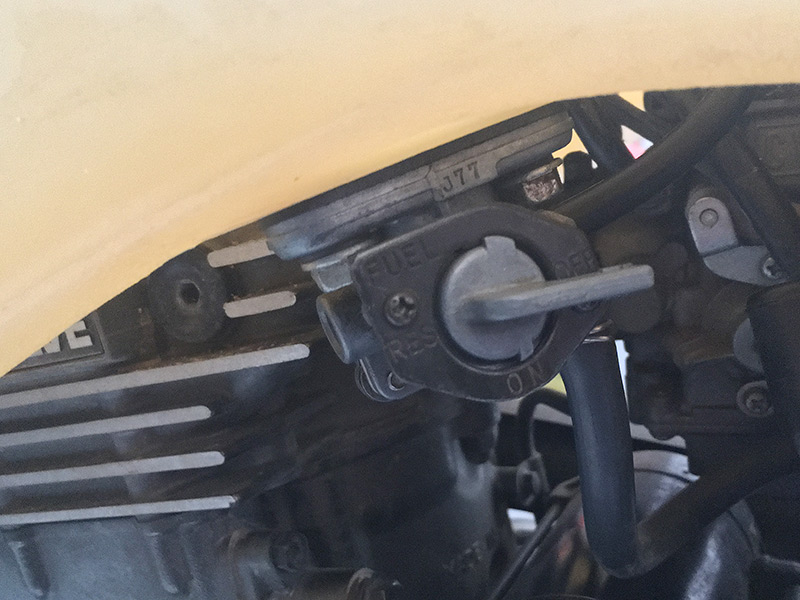
A leaky petcock. It makes my wife giggle every time I talk about it, but the condition is no laughing matter. First your petcock begins to weep, then it starts to seep, and before you know it there’s a smelly puddle on the floor.
A corn-rich diet is to blame, in this case gasoline blended with ethanol, which wreaks havoc on rubber parts on older motorcycles.
Motorcycle Fuel Stabilizers and Short-Term Storage
My problems began when I took my 1998 Kawasaki KLR650 out of long-term storage (read: months of dust-covered neglect) to go on a dual-sport ride. I fiddled with my petcock several times on the ride—from Off to On to Reserve, back to On, and then finally Off at the end of the ride.

The next morning I opened the door to my garage and was punched in the nose by the smell of gas. Walking over to the bike I saw a small puddle just below the petcock. Gulp.
I took advantage of Kawasaki’s handy online library of parts diagrams and downloaded a PDF of the fuel tank schematic and parts list for my bike. Then I called my local dealer’s parts department, and the fellow on the other end of the line told me that none of the parts were in stock, and he didn’t seem too interested in ordering $3 O-rings on my behalf. Buh-bye.
Pointing my mouse over to BikeBandit.com, I found the very same KLR650 schematic and parts list—or so I thought—on its website. I ordered the O-rings that I thought I needed, plus a replacement diaphragm and spring for the Kawasaki’s vacuum-operated petcock.

As I waited about a week for the parts to arrive, I rode my KLR back and forth to work to burn the 6.6 gallons of fuel in the larger-than-stock IMS tank since I’d need to drain it to remove the petcock. But since it leaked gas, I couldn’t park it in the garage at home or the office or else the place would reek of gas, offending my spouse and co-workers.
At last, the parts arrived. When I cross-checked the order against the parts diagram, I realized I had somehow forgotten to order a third O-ring that seemed critical. So I ordered it and waited another week.

When the third O-ring arrived, I rode my KLR with what I hoped would be enough fuel to travel the 22 miles from my house to the office. With the petcock on Reserve and my anxiety on high, I rode at a moderate pace for about seven miles, and then the bike conked out. Luckily I was in the far-right lane of rush hour-busy U.S. Route 101, and I was on level ground about 100 yards shy of the next exit, where a gas station conveniently awaited. As I pushed to bike toward the station, a friendly fellow in a pickup truck stopped and asked if I needed help. I thanked him, but declined since the KLR was light and I’d be at the gas pump in a matter of minutes. I put in a gallon—more than enough to get me to work.
Buy & Fly: Boise to Tucson on a Kawasaki KLR650
At the office, I used my handy Aerostich E-Fill to siphon the remaining gas out of the tank and into a fuel container. Time to disassemble the petcock. Everything went swimmingly, until I realized there was a gasket that needed to be replaced that wasn’t available from BikeBandit. And the most visibly degraded rubber part was another gasket that fits between the bottom of the IMS tank and the petcock.
Even though the IMS tank was almost 20 years old, the Riverside, California-based company is still in business, and a very helpful fellow named Daniel took my order over the phone for a replacement gasket (since it only cost a few bucks, I said, “Heck, throw in an extra one just in case!”). Then I put the part number for the other gasket into Google and quickly found it available on Partzilla.com. With the tank empty and the petcock disassembled, I waited another week.

With all of the necessary parts (finally) in hand, re-assembly was a snap and my petcock is no longer leaky.
Alas, I think it’s about time to say good-bye to the old KLR. I’ve run out of patience dealing with the effect ethanol-blended gas has on its rubber parts. And don’t get me started on what it does to the carburetor….









Uh, you know you *could* have poured the fuel out of the 650’s tank into the tank of your car/other motorcycle(s) instead of just letting it slowly pour out on the ground over time, right?
Why, oh why didn’t you try a little silicon gasket cement to coat the offending part so you could ride it, sans leak for the month or so it took for the poor service to deliver the parts? O rings are available in numerous sizes at auto parts stores and hardware stores as well. John
Everyone’s a critic. Sheesh.
I have the stock tank on my 2006 KLR. When I discovered that the petcock was leaking, I ordered a rebuild kit through a local shop, Hayasa Motorbikes, and it arrived the next day. Being lazy, I didn’t bother to drain the tank. Instead I removed it from the bike and placed it upside down on a sheet of cardboard. 15 minutes later, after replacing the seals in the petcock, I reinstalled the gas tank. I doubt that more than an ounce or two of fuel leaked out onto the cardboard.